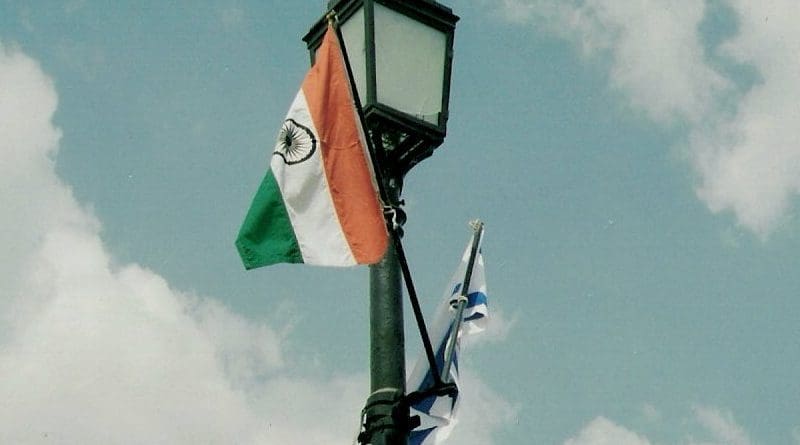Learning From Israel: Countering Stone-Pelters In Kashmir – OpEd
By Cecil Victor*
The use of pellet guns to control juvenile stone-pelters has acquired an odium it deserves. It has become counter-productive of the intent and purpose of crowd control in the perfervid Kashmir valley. The government needs to explore the use of an even more stinky (not at all facetiously suggested — in fact very seriously proffered) alternative the crowning characteristic of which is that it is not lethal, will not break the skin or any bones — but leave the target in a sloe of despair. At least for three days.
In the battle for hearts and minds in a counter-insurgency/counter-terror situation every psychological ploy becomes important in the curbing, containment and neutralisation of threats to public order. Overt and well-publicised unveiling of the new equipment and public withdrawal of the obnoxious shotgun from the security arsenal will set tongues wagging and people thinking — which young man would want to move out in public stinking like a load of sewage? And which community would want to live with an all-pervasive smell that would be the result of a stone-pelting incident?
The government has tried the shotgun and acquired opprobrium. It uses teargas as standard equipment. It used pepper spray (PAVA) to limited effect (it needs to experiment with better ways of dispersal including the use of drones). There are reports of some police forces reverting to the catapults using glass marbles as warheads — these can be as lethal as pellets if a person is hit on the head.
Those of us who grew up in towns were there were still a lot of fauna in the shrubbery know that catapults can kill. It was not for nothing that even the “pea-shooter” — that bit of pipe that could have shamed a tropical head-hunter — was banned in schools.
The Central Reserve Police Force (the security mainstay for riot control) has suggested that it will use a modified pellet gun with a horizontal slit mechanism attached to its nozzle. The idea apparently is to contain the dispersal of pellets from the round configuration (which contributes to its indiscriminate effect) to the horizontal. By this it apparently hopes to achieve the “below the belt” legal requirement for the use of lethal weapons.
At 25 metres — when stone-throwing is effective against security forces, the use of the horizontal pellet gun will have a dispersal of at least 1.5 metres (five feet) in height and a frontage of 3 metres (10ft). Everything within this ambit will be peppered with pellets. This means that an adolescent five feet tall will suffer the same wounds as the unmodified weapons inflicts. After all, is it not true that the militants are using children as human shields?
Government sources have recently indicated that to try and avoid collateral damage to children, security forces would be more “discriminate” in the use of the modified pellet gun. As the above calculation of trajectory and area covered by pellets dispersed by the horizontal gadget shows there is no room for being selective. The children as well as their instigators would bear the full brunt of the blast from the shotgun.
The government’s insistence that it will, henceforth, be more ‘discriminate’ in the use of this weapon is both facetious and dangerous in that it will prolong the rationale for the militancy and bring a bad name to security forces which is already apparent in the opposition to the Armed Forces Special Powers Act.
The death of a little girl while sleeping in her home during a gunfight between militants and security forces in close proximity to an inhabited area illustrates in gory detail that gunfire cannot always be concentrated on particular parts of a battlefield. There are recorded cases when rifle bullets have ricochetted off hard surfaces and travelled up to two kilometres in a tangential direction to cause damage to a driver of a car.
In the particular case of the killing of the little girl, the government must clarify through reconstruction of the scene of the incident and forensic tests on the bullets to determine who shot in the direction of the child’s home. Given that the security forces were within calling distance of the family suggests that they were the actual targets of the terrorists who were shooting from the opposite direction. The incident should not be allowed to fester and a swift clarification must be made.
To avoid the odium of using excessive force on stone-pelters, the security establishment should check out what Israel has produced to deal with stone-throwing. It has developed a chemical that is both non-toxic and non-lethal and has a persistent, all-pervasive smell. It is appropriately named after an animal that sprays a stinking fluid to keep predators at bay, the skunk. It can be dispersed through a water cannon or hand-held canisters.
Like with every other weapon used in crowd control, strict guidelines must be imposed that no matter what the provocation it will not be fired into homes or places of worship. It will be used only against those pelting stones on the streets.
Those who have been soaked once will need to lie low for several days. If seen outside their homes they can easily be identified and dealt with by teams of scientists from the Defence Institute of Psychological Research (DIPR) of the Defence Research & Development Organisation to deradicalise them, to find out their source of inspiration and for locating the ringleaders.
One lecture-demonstration of the equipment in areas of endemic stone-throwing could well nip the problem in the bud.
*The author is a senior journalist and security analyst. Comments and suggestions on this article can be sent to [email protected]

